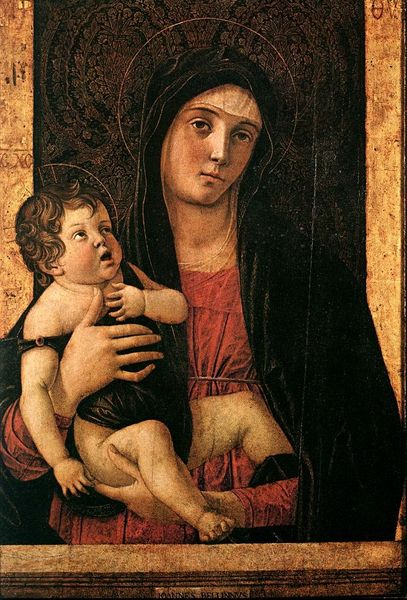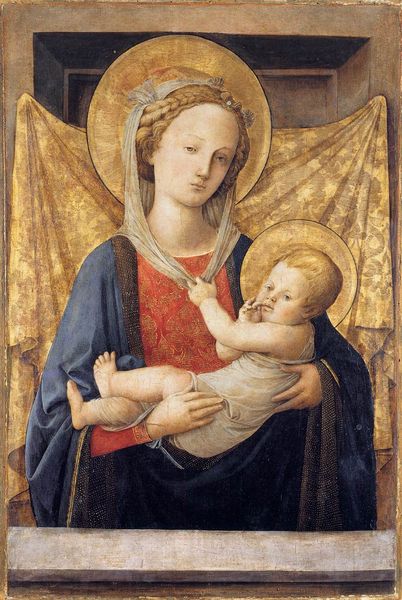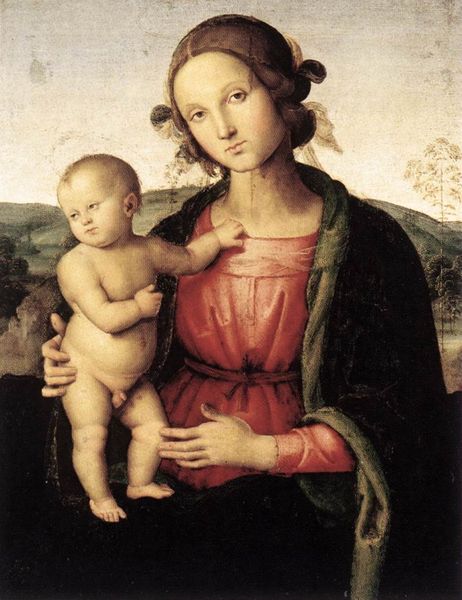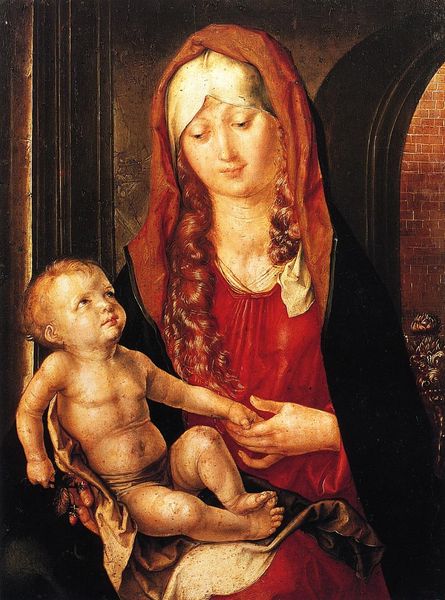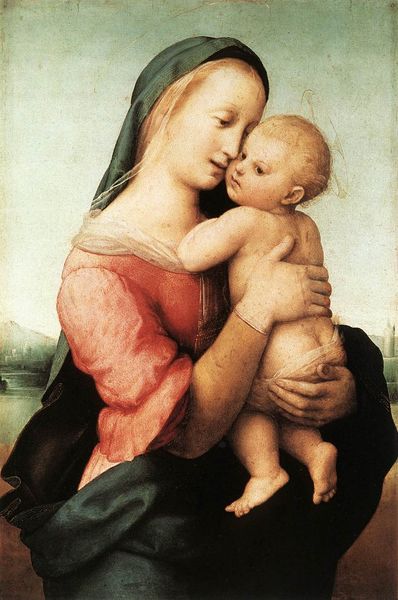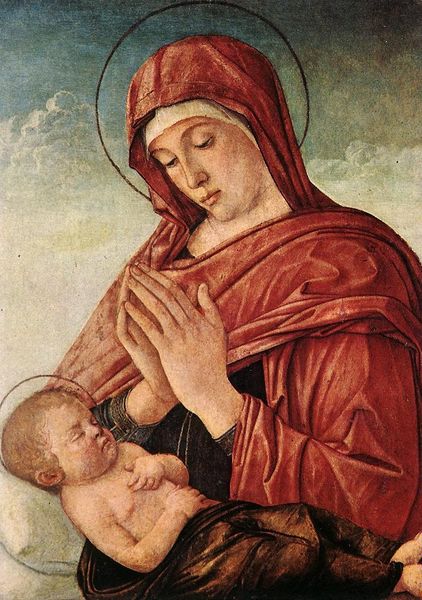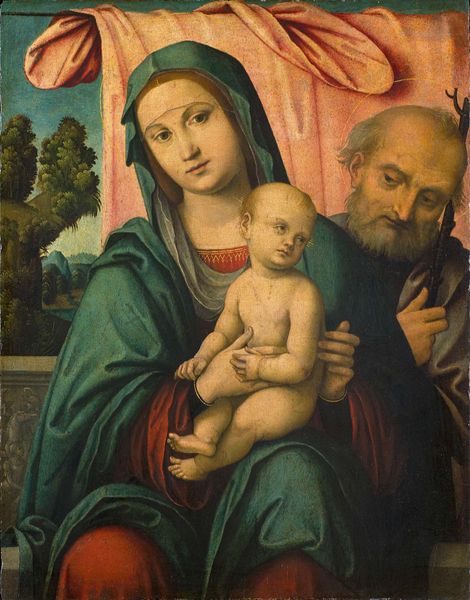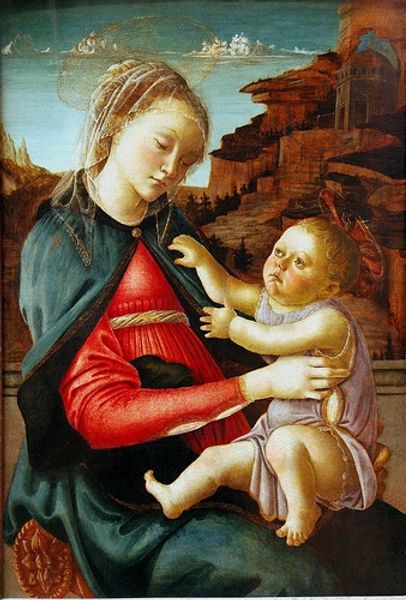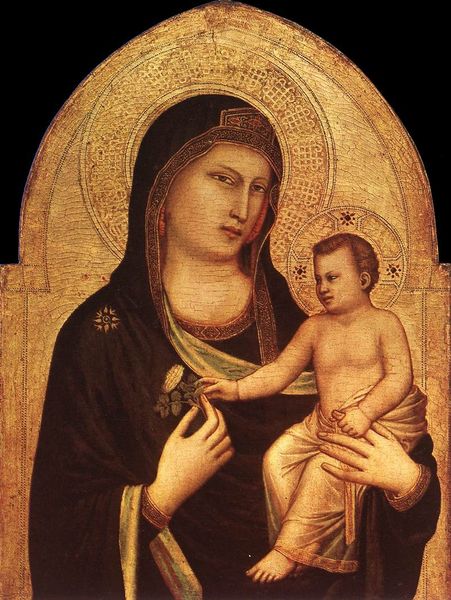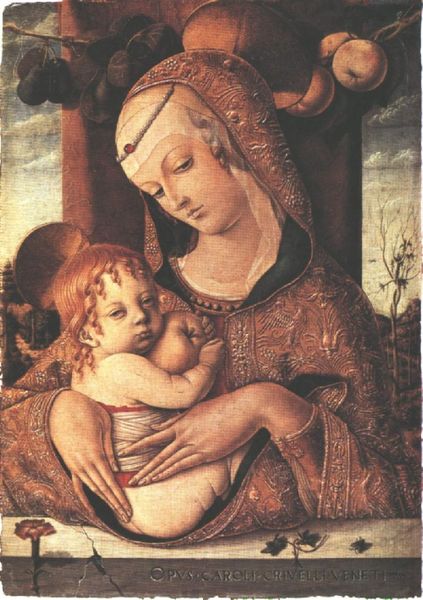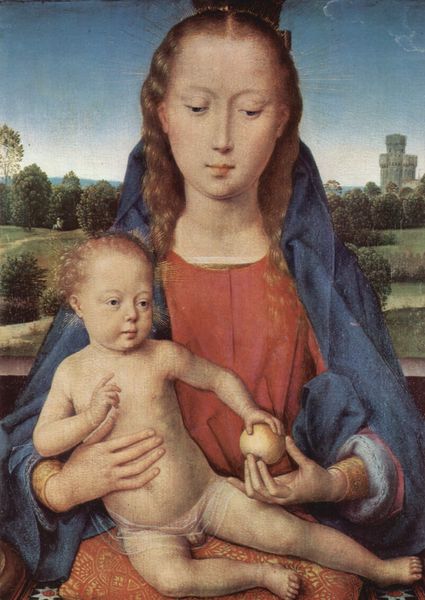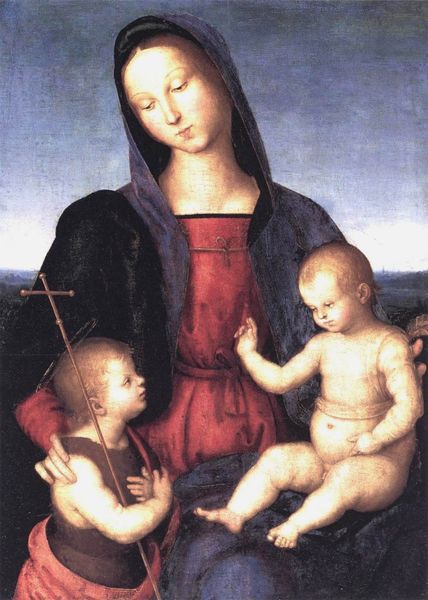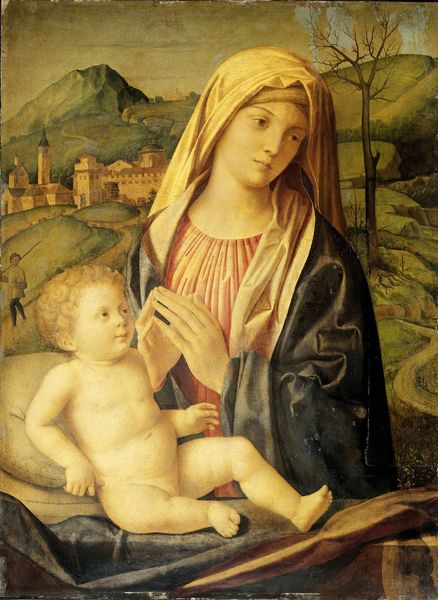
tempera, painting, oil-paint
#
portrait
#
tempera
#
portrait
#
painting
#
oil-paint
#
figuration
#
madonna
#
oil painting
#
history-painting
#
italian-renaissance
Copyright: Public domain
Editor: Here we have Botticelli's "Madonna del Mare," painted in 1477 with tempera on wood. I'm struck by how tender it is, yet also a bit somber. What stands out to you in this piece? Curator: It’s interesting to consider this piece within the broader context of late 15th-century Florence. What does the use of tempera, versus the emerging popularity of oil paint, tell us about Botticelli's workshop and his patron's desires? Tempera allowed for precise detail and vibrant colors, demanding highly skilled artisans, pointing to the continued relevance and economic viability of traditional artistic production. Editor: So, it's not just a matter of aesthetics, but also about the socio-economic forces at play? How does this challenge the typical narrative of Renaissance art focusing on individual genius? Curator: Precisely. Think about the labor involved in preparing the pigments, grinding them, mixing them with egg yolk – the raw materials and their preparation, the unseen hands. Even the acquisition of the wood panel becomes part of the narrative; was it locally sourced, connecting to regional trade networks, or imported, signifying wider economic reach? These decisions, driven by materials and means, significantly shaped the final artwork and reflect both social standing and access. Editor: It’s amazing to consider all the labor involved, and how the materials themselves carry economic weight. How can we trace the implications of that labour? Curator: It allows us to trace the commodity chain backward, from finished painting to the sources of raw materials. Each stage has an embedded value related to labour. Also, the artist's own hand becomes just one part of the production line within this complex socioeconomic web. This piece really highlights the crucial intersections of materials, skill, labour, and economic circumstance in artistic creation during the Renaissance. Editor: Thinking about it that way completely shifts how I see the painting. Thanks for illuminating all of the production matters. Curator: Absolutely. Considering art from this materialist perspective allows a much deeper understanding of both process and consumption during the Renaissance era.
Comments
No comments
Be the first to comment and join the conversation on the ultimate creative platform.
